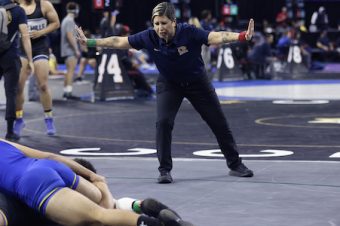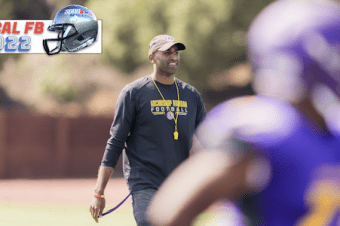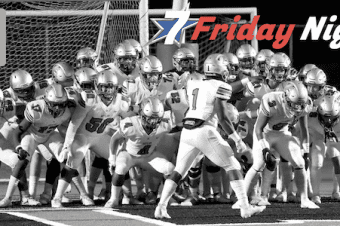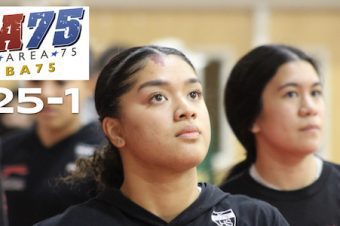TRAINING TIME: Build your way to being the best athlete you can be
CalHiSports Insights November 15, 2012 SportStars 0
Last week I discussed what plyometrics are and why the majority of high school athletes are wasting their time if they jump right into a high intensity plyometric program.
Now it doesn’t mean that the only thing a beginning athlete should do is strength train. It should be a focus, but a well-rounded program incorporating some level of rate-of-force development work via plyometrics and other methods will be superior to a program which only includes strength training.
So in this issue I’ll give an example of how to progress an athlete from a jumping program to a plyometric program. Keep in mind this is only an example and the assumption is this athlete has been assessed and ready to participate in this program. Also keep in mind that other qualities are focused on concurrently such as mobility, flexibility, strength, speed, total body power, etc.
Let’s use jumps (2 Legs) as an example for a basketball athlete:
• Week 1-4, low intensity — Goal: teach landing concepts first. Develop eccentric strength while conditioning muscle and tendons to store energy efficiently and safely. First we assess the athlete’s vertical jump to pick the appropriate box height. If the athlete cannot land on the box quietly on the balls of their feet in the same position they jumped out of, then we would go with a shorter box. Once the athlete has shown consistent proficiency in this phase then we progress.
• Week 5-8, low-to-medium intensity — Goal: continue to teach landing while increase decelerative forces by adding more gravity. Continue to condition muscles and tendons while increasing eccentric strength. In this phase we would have the athlete jump over a six-inch or smaller hurdle, which will add more gravity and decelerative forces to overcome, improving eccentric strength. If the athlete cannot jump over the hurdle meeting the same criteria as the previous phase, they will be regressed.
• Week 9-12, medium intensity — Goal: Add an elastic component, teaching the athletes to store and release energy more efficiently. The beginning of using the strength they have more quickly. In this phase we stay with the same hurdle and add a bounce in between. This is still a low to medium level intensity movement, but now we are adding a bounce, which is a low level stretch shortening response of the musculotendon complex. We are teaching the athlete to produce a low level of force very quickly which helps the athlete to improve coordination and condition the musculotendon complex to stretch and shorten more efficiently, preparing the athlete for the next phase.
• Weeks 13-16, medium-to-high intensity — Goal: Enhance the ability to more rapidly express their current level of strength, develop reactive rebound type strength and improve the capacity to use their tendons as movement generators. This is where we truly will enhance the efficiency of the entire absorption, stabilization and release of force in a sport-specific manner. This can be considered a true plyometric activity. At this point the athlete has gained strength, movement proficiency, mobility and stability throughout the joints of the body and ample time to groove the patterns taught in the previous phases. The athlete has also developed an appropriate base of strength from the previous phases.
Staying with the same hurdle the athlete goes over the hurdles continuously without stopping. The athlete will jump over each hurdle with as little ground contact time as possible. This is where we are trying to develop that quick stretch shortening cycle of the musculotendon complex, which will improve how fast the athlete can produce force.
This is a 16 week progression, and just the beginning for a high school athlete, as the athlete gets stronger we continually progress to higher boxes and hurdles starting over with the same 16 week progression as long as the athlete continues to show proficiency. The fact is more advanced progressions require more strength from your athletes, and you simply can’t waste their time trying to improve the rate of something they don’t have. So knowing where your athletes are now is the key to getting them where they need to be.
Tim Rudd is an International Youth Conditioning Association specialist in youth conditioning (level 3), speed and agility (level 2), and nutrition specialist (level 1). For more information on anything you read in Training Time, email him at Tim@Fit2TheCore.com.
SportStars
SportStars Magazine: High School Sports Articles Online SportStars is your go-to source for the very best high school sports articles in California. Player and team profiles, game coverage, health and fitness tips and the largest Camps, Clinics & Combine resource for athletes. We're the story behind the stats.










No comments so far.
Be first to leave comment below.